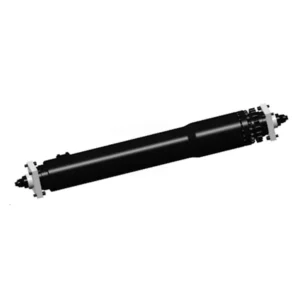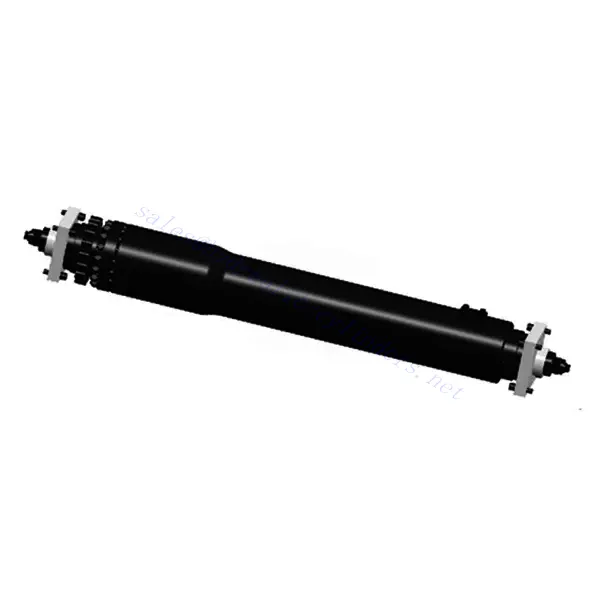Press Return Cylinder
Press Return Cylinder

The press return cylinder is a vital component in optimizing pressing operations in various industries. With its advanced features and reliable performance, this cylinder offers enhanced efficiency, accuracy, and safety.
The press return cylinder is valuable for enhancing efficiency, accuracy, and safety in pressing operations. With its robust construction, precise positioning, efficient return, and integrated safety features, this cylinder empowers you to achieve superior results. By following the recommended usage methods and maintenance practices, you can maximize your pressing operations’ performance, productivity, and lifespan. Choose the press return cylinder to streamline critical processes and elevate operational excellence.
Press Return Cylinder Key Characteristics:
- 坚固的结构
- The press return cylinder is constructed using high-quality materials, ensuring durability and longevity.
- Its robust design can withstand heavy loads and harsh operating conditions, providing reliable performance in demanding industrial environments.
- Precise Positioning:
- This cylinder offers precise positioning control, allowing for accurate alignment of the press return mechanism.
- Its exceptional accuracy ensures consistent and reliable positioning, minimizing the risk of errors or misalignments.
- Efficient Return:
- The press return cylinder enables the swift and efficient return of the press mechanism to its starting position.
- Its powerful hydraulic system facilitates rapid movement, reducing idle time and increasing overall productivity.
- Safety Features:
- This cylinder incorporates safety features such as pressure relief valves and emergency stop mechanisms.
- These safety features help protect the press and the operator, preventing accidents and minimizing the risk of damage.
Press Return Cylinder Parameter:
| Product Name | Hydraulic Press Return Cylinder |
| Features: | Provide return force for main cylinder and side cylinder, divided into plunger type/piston type |
| Bore diameter: | 180mm~410mm |
| Rod diameter: | 120mm~360mm Stroke≤4500mm |
| Thrust force: | Maximum 2612KN (Bore diameter: 410mm/pressure31.5MPa) |
| Plunger: | 140mm~360mm Stroke≤3000 mm |
| Plunger Thrust force: | Maximum 3206KN (Plunger 360mm/pressure31.5MPa) |
| Hydraulic Press Return Cylinder Applications: | Hydraulic Press |
Piston
Rod diameter: 120mm~360mm
Stroke≤4500mm
(Bore diameter: 410mm/pressure31.5MPa)
Plunger
Stroke≤3000 mm
(Plunger 360mm/pressure31.5MPa)
Press Cylinder Factory:

Usage Method Of Press Return Cylinder:
- Installation and Integration:
- Mount the press return cylinder securely onto the press frame or designated mounting area.
- Ensure proper alignment and connection, following the manufacturer’s guidelines and recommendations.
- Hydraulic Connections:
- Connect the press return cylinder to the hydraulic power unit using appropriate hydraulic hoses and fittings.
- Verify that the hydraulic connections are secure and leak-free to ensure efficient fluid transfer and safe operation.
- Positioning Adjustment:
- Adjust the positioning of the press return cylinder according to the specific requirements of your pressing application.
- Follow the manufacturer’s instructions to set the desired starting and return positions for optimal performance.
- Operational Controls:
- Familiarize yourself with the operational controls provided by the press return cylinder.
- Understand how to initiate the return movement and additional features, such as speed control or emergency stop functions.
What Law Of Hydraulics Does The Brake System Use?
The brake system in vehicles typically utilizes Pascal’s law of hydraulics. Pascal’s law states that when pressure is applied to a confined fluid, the pressure is transmitted equally in all directions. In the context of a hydraulic brake system, this principle allows for force transmission from the brake pedal to the brakes themselves.
Here is a simplified explanation of how the brake system utilizes Pascal’s law:
- Brake Pedal Application:
- When the driver presses the brake pedal, a mechanical force is applied to the master cylinder.
- Master Cylinder:
- The master cylinder contains a piston that moves in response to the force applied by the brake pedal.
- As the piston moves, it exerts pressure on the brake fluid contained within the master cylinder.
- Transmission of Pressure:
- Pascal’s law comes into play at this point.
- The pressure created by the movement of the piston is transmitted equally throughout the brake fluid in all directions.
- Hydraulic Lines:
- The brake fluid, under pressure, flows through hydraulic lines or brake pipes.
- These lines connect the master cylinder to the brake calipers or wheel cylinders at each wheel.
- Brake Calipers/Wheel Cylinders:
- The brake calipers (in disc brakes) or wheel cylinders (in drum brakes) receive the pressurized brake fluid at each wheel.
- The pressure causes the calipers or cylinders to exert force on the brake pads or shoes, which press against the brake rotors or drums.
- Friction and Braking Action:
- The friction between the brake pads and rotors (or shoes and drums) slows down or stops the vehicle’s wheels.
工厂的能力和产能:
(1) 装配
我们拥有一流的自主研发装配平台。液压油缸生产车间拥有 4 条半自动提升油缸装配线和 1 条全自动倾斜油缸装配线,设计年生产能力 100 万支。特种油缸车间配备了各种规格的半自动清洗装配系统,设计年生产能力 20 万只,并配备了知名数控加工设备、加工中心、高精度油缸加工专用设备、机器人焊接机、自动清洗机、油缸自动装配机、自动喷漆生产线等。现有关键设备 300 多台(套)。设备资源的优化配置和高效利用,保证了产品的精度要求,满足了产品的高质量需求。


(2) 机加工
加工车间配备了定制的斜轨车削中心、加工中心、高速珩磨机、焊接机器人及其他相关设备,可加工最大内径 400 毫米、最大长度 6 米的气缸管。

(3) 焊接

(4) 油漆和涂料
配备中小型圆筒自动水性漆喷涂线,实现机器人自动上下料和自动喷涂,设计产能为每班 4000 件;
我们还拥有一条由动力链驱动的大型油缸半自动喷漆生产线,设计产能为每班 60 箱。


(5) 测试
我们拥有一流的检验设施和试验台,确保气缸的性能符合要求。

We are one of the best hydraulic cylinder manufacturers. We can offer comprehensive hydraulic cylinders. We also provide corresponding 农用齿轮箱. We have exported our products to clients worldwide and earned a good reputation because of our superior product quality and after-sales service. We welcome customers at home and abroad to contact us to negotiate business, exchange information, and 与我们合作!
参观我们的 VR 工厂
通过以下方式参观我们的 VR 工厂
叉车液压缸如何工作?
液压缸应用:


